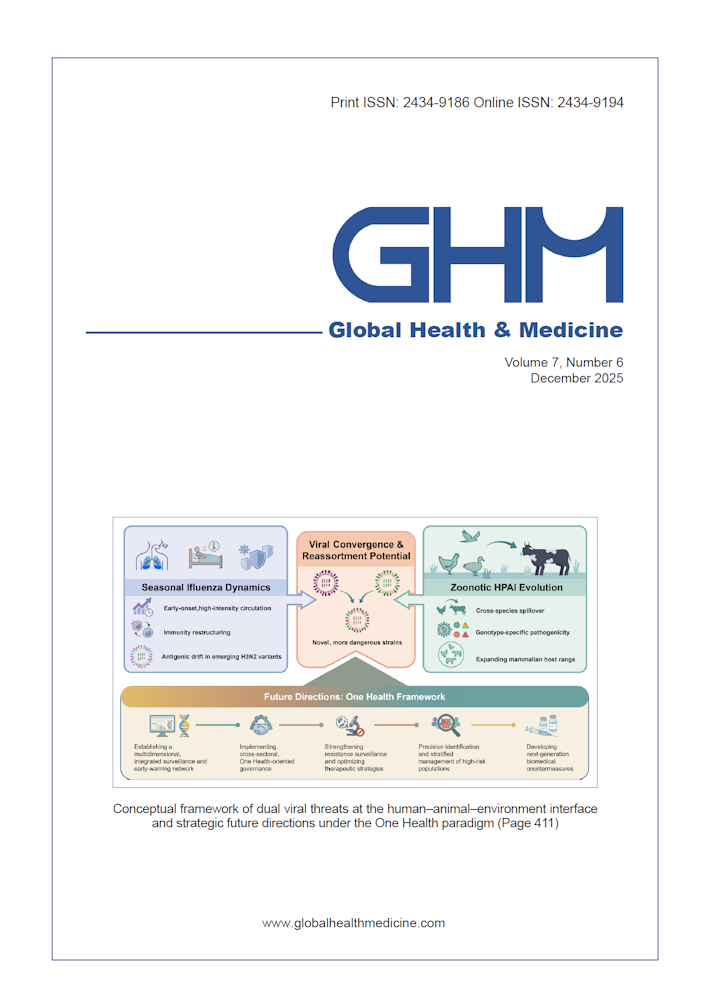Global Health & Medicine 2023;5(6):366-371.
A novel protocol for de-isolating moderately and severely immunocompromised COVID-19 patients
Kamegai K, Iwamoto N, Ishikane M, Yamamoto K, Horii K, Kubota S, Hangaishi A, Shimazu H, Togano T, Yamashita H, Yamada Y, Ohmagari N
Immunocompromised coronavirus disease 2019 patients are at a higher risk of prolonged viral shedding than immunocompetent patients. However, as of August 2023, there is no clear international standard for de-isolating vulnerable patients. A comprehensive assessment is advisable based on various information, such as the increase in immune escape of specific mutant strains as well as the patient's innate immunity and vaccination status; therefore, consultation with an infectious disease specialist is recommended. The patient population defined as moderately or severely immunocompromised by the Centers for Disease Control and Prevention and the European Centre for Disease Prevention and Control is significantly broad. A boundary between the two remains to be delineated, and the existing protocols allow the release of patients based on their symptoms alone. This may lead to an unnecessary extension or premature termination of isolation. In this study, we searched for studies, particularly those that used real-world data, discussed the results with experts in our hospital, and proposed new isolation criteria based on both testing and clinical symptoms. We classified patients into three groups namely severely, moderately, and mildly immunocompromised, defined by their background and the administration of immunosuppressive drugs. A separate flowchart for ending isolation is indicated for each group. This standard may be a useful support material, especially for non-specialists. Nevertheless, our criteria must be revised and added continuously; accumulating real-world data to support revision of and addition to the list is becoming increasingly important.
DOI: 10.35772/ghm.2023.01053







